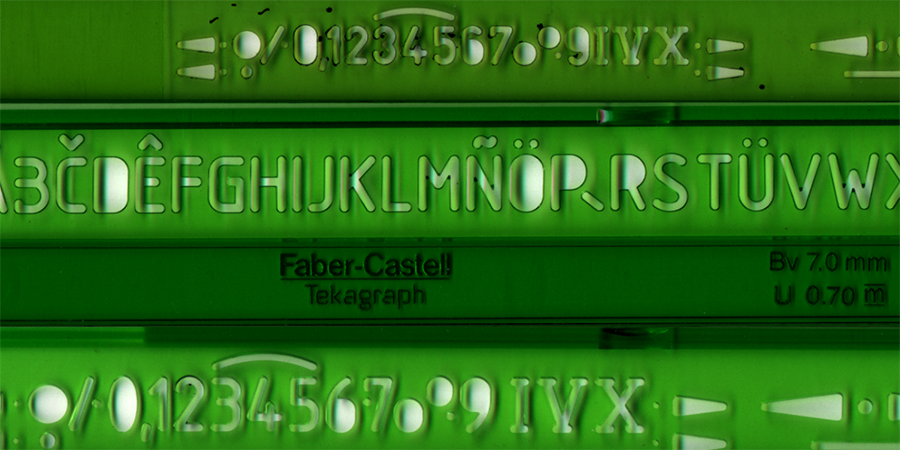2017/03/1
DINosaur brings fun to the template
Technical sans serifs designed on grids or based on templates are very popular, especially among designers. However, many perceive them as cold and impersonal. DINosaur is a friendly alternative.
Discover the many faces of DINosaur in its postcard gallery.

While—just like any other designed artifacts—typefaces are subject to trends and fashions, some typographic models enjoy an enduring popularity. This doesn’t only happen to typefaces that have a historical importance. Alphabets that are part of the vernacular, the everyday world that surrounds us, become ingrained in our collective consciousness. They conjure up comforting feelings of familiarity, sometimes of nostalgia. Understandably, type designers and foundries try to tap into those emotions. Many do so in less imaginative ways, creating slavish facsimiles. Yet some manage to find a fresh approach and turn these mainstays into exciting and useful contemporary fonts.
One example is the technical sans serif: letters drawn by engineers and architects, using only straight lines and simple circular arcs, often with the aid of grids or stencils. Their “undesigned” appearance exerts a strange attraction to many designers fascinated by their modularity and strict geometry. Among others, this has resulted in a multitude of adaptations of the alphabets devised by the Deutsches Institut für Normung, the German Institute for Standardization, such as DIN 1451.